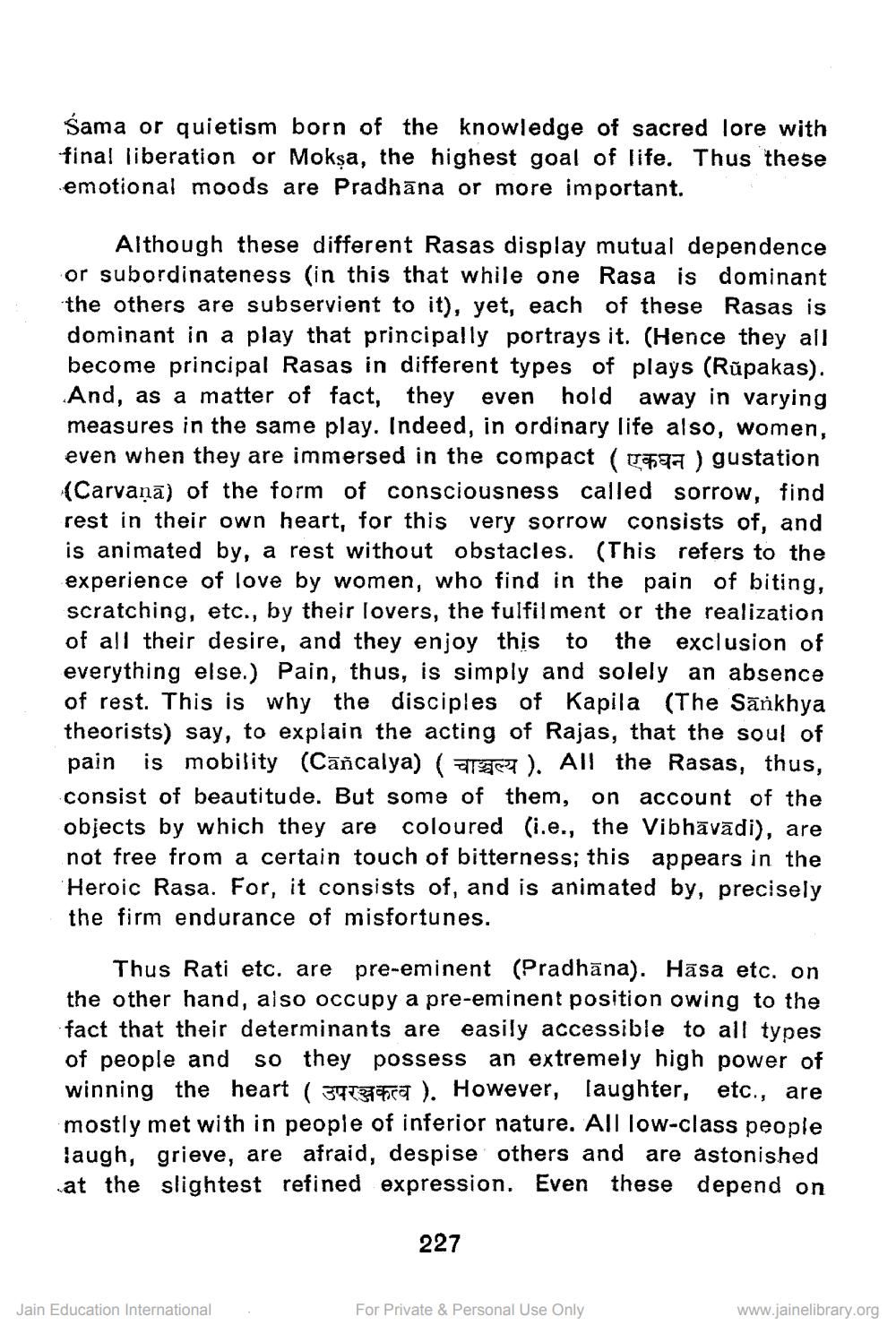________________
Sama or quietism born of the knowledge of sacred Tore with final liberation or Mokşa, the highest goal of life. Thus these emotional moods are Pradhāna or more important.
Although these different Rasas display mutual dependence or subordinateness (in this that while one Rasa is dominant the others are subservient to it), yet, each of these Rasas is dominant in a play that principally portrays it. (Hence they all become principal Rasas in different types of plays (Rūpakas). And, as a matter of fact, they even hold away in varying measures in the same play. Indeed, in ordinary life also, women, even when they are immersed in the compact (T9791 ) gustation (Carvaņā) of the form of consciousness called sorrow, find rest in their own heart, for this very sorrow consists of, and is animated by, a rest without obstacles. (This refers to the experience of love by women, who find in the pain of biting, scratching, etc., by their lovers, the fulfilment or the realization of all their desire, and they enjoy this to the exclusion of everything else.) Pain, thus, is simply and solely an absence of rest. This is why the disciples of Kapila (The Sārkhya theorists) say, to explain the acting of Rajas, that the soul of pain is mobility (Cāñcalya) ( 157 ). All the Rasas, thus, consist of beautitude. But some of them, on account of the objects by which they are coloured (i.e., the Vibhāvādi), are not free from a certain touch of bitterness; this appears in the Heroic Rasa. For, it consists of, and is animated by, precisely the firm endurance of misfortunes.
Thus Rati etc. are pre-eminent (Pradhāna). Hāsa etc. on the other hand, also occupy a pre-eminent position owing to the fact that their determinants are easily accessible to all types of people and so they possess an extremely high power of winning the heart ( 3773ca ). However, laughter, etc., are mostly met with in people of inferior nature. All low-class people laugh, grieve, are afraid, despise others and are astonished at the slightest refined expression. Even these depend on
227
Jain Education International
For Private & Personal Use Only
www.jainelibrary.org




